
We launched our Nakai Women Handicraft Program
August 21, 2019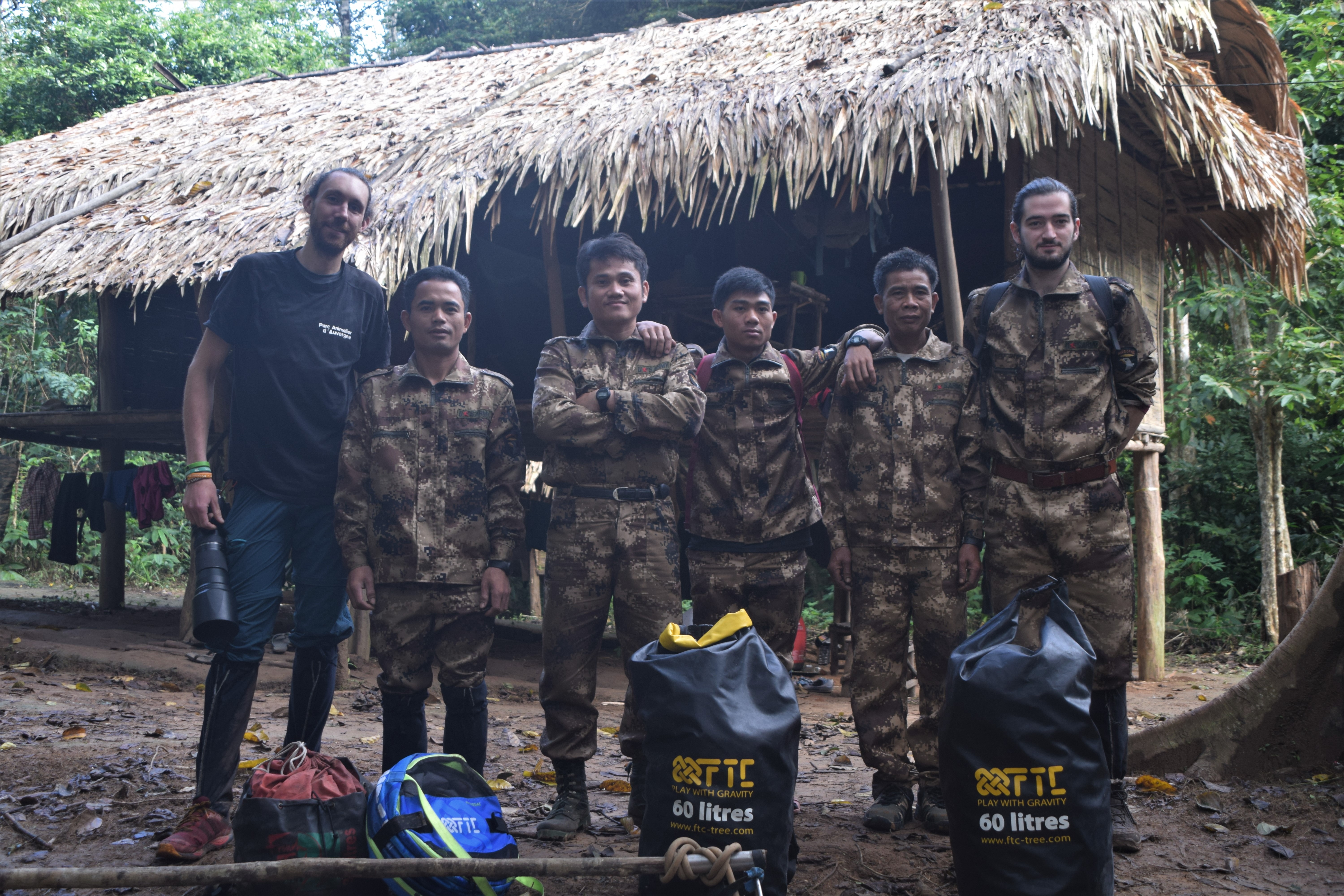
A partner’s visit: Bridging the zoo community with on-the-ground conservation work
September 18, 2019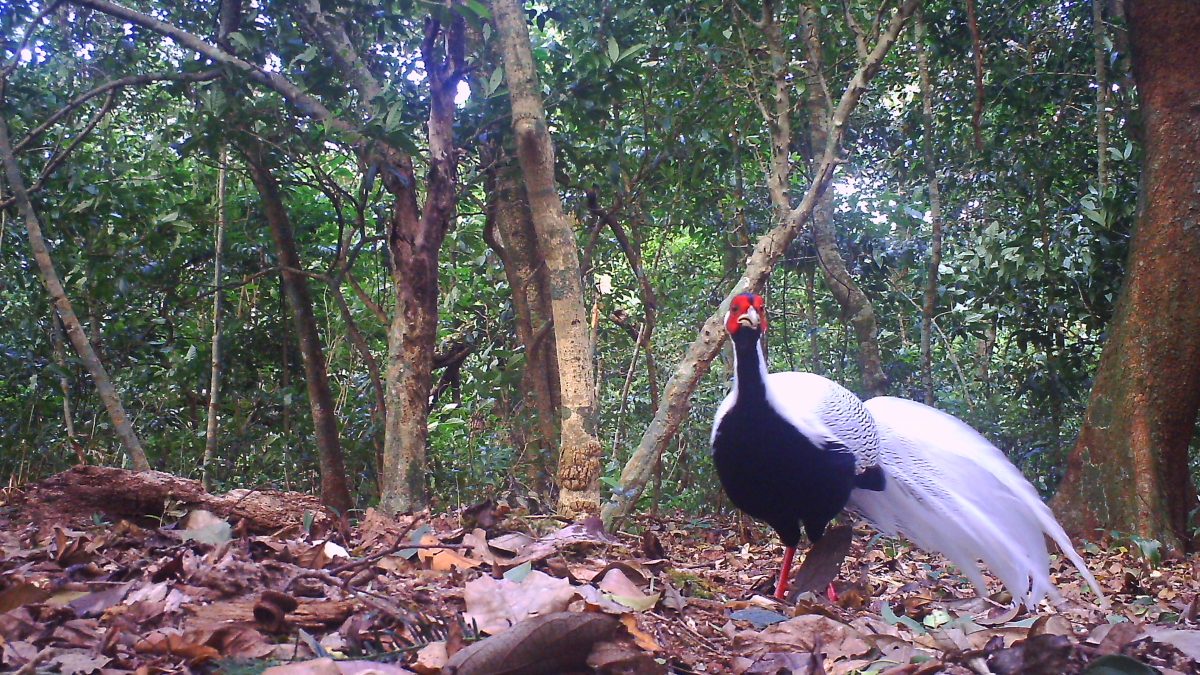
As part of the Biodiversity Research & Monitoring Strategy for Nakai – Nam Theun National Park (NNT NP) implemented by the Watershed Management and Protection Authority (WMPA) and the role of Association Anoulak to advise and oversee the implementation of the strategy, systematic camera-trap surveys were conducted in 2018-2019. The results will allow monitoring of appropriately selected indicator species’ populations to facilitate an assessment of whether some wildlife populations are increasing, decreasing or remaining stable as a result of management interventions implemented by the WMPA and by Association Anoulak (e.g. law enforcement; community sustainable livelihood for conservation; outreach).
The main objective of these surveys is to estimate trends in animal populations (monitoring) over time in the management zones of interest.
The NNT NP is divided into management zones including three Biodiversity Priority Zones (BPZs) (Figure 1) delineated based on their conservation importance at the national and/or global levels and on threat analysis. In 2018—2019, the three BPZs were surveyed with ground camera-traps: a total of 134 camera-trap stations (268 camera-traps) were set-up, with an overall survey effort of 20,183 active camera-trap nights. These surveys will be repeated in 2020 to obtain a first comparison in population trends. (Camera-trap surveys were conducted in NNT NP in 2007-2011 using different methodology preventing comparing results in terms of population trends, however it is possible to compare species records and their frequency. Results of these preliminary surveys have been partially published: e.g. Coudrat et al., 2014a; Coudrat et al., 2014b; Coudrat & Nekaris, 2013).
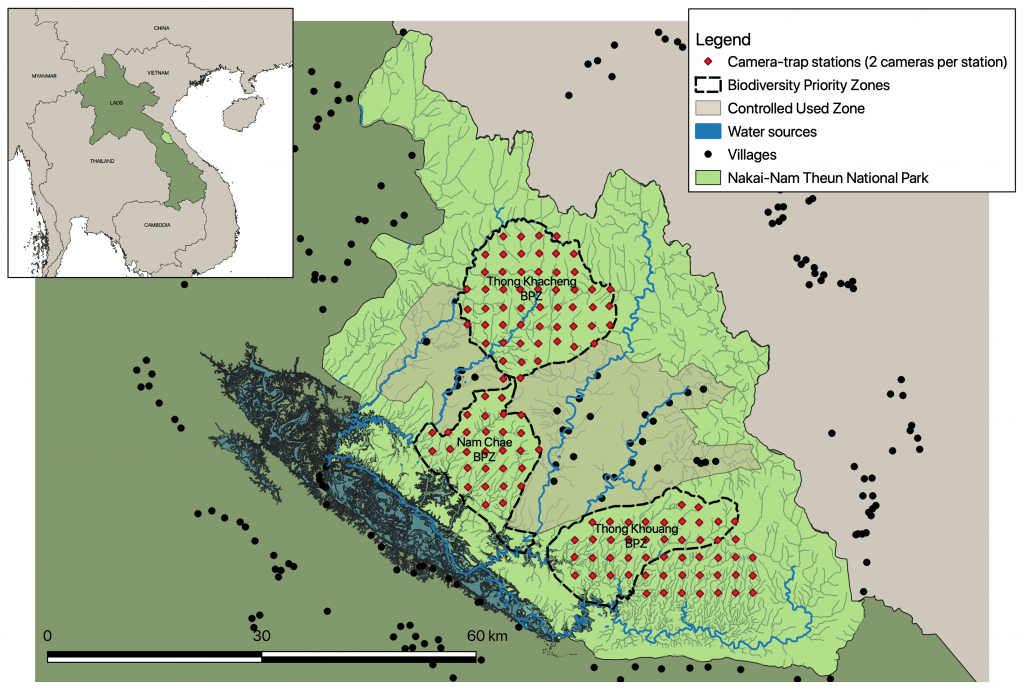
Figure 1: location of Nakai – Nam Theun National Park in Laos and of the 134 camera-trap stations (268 camera-traps) set-up in 2018-2019 to cover the three Biodiversity Priority Zones of the national park.
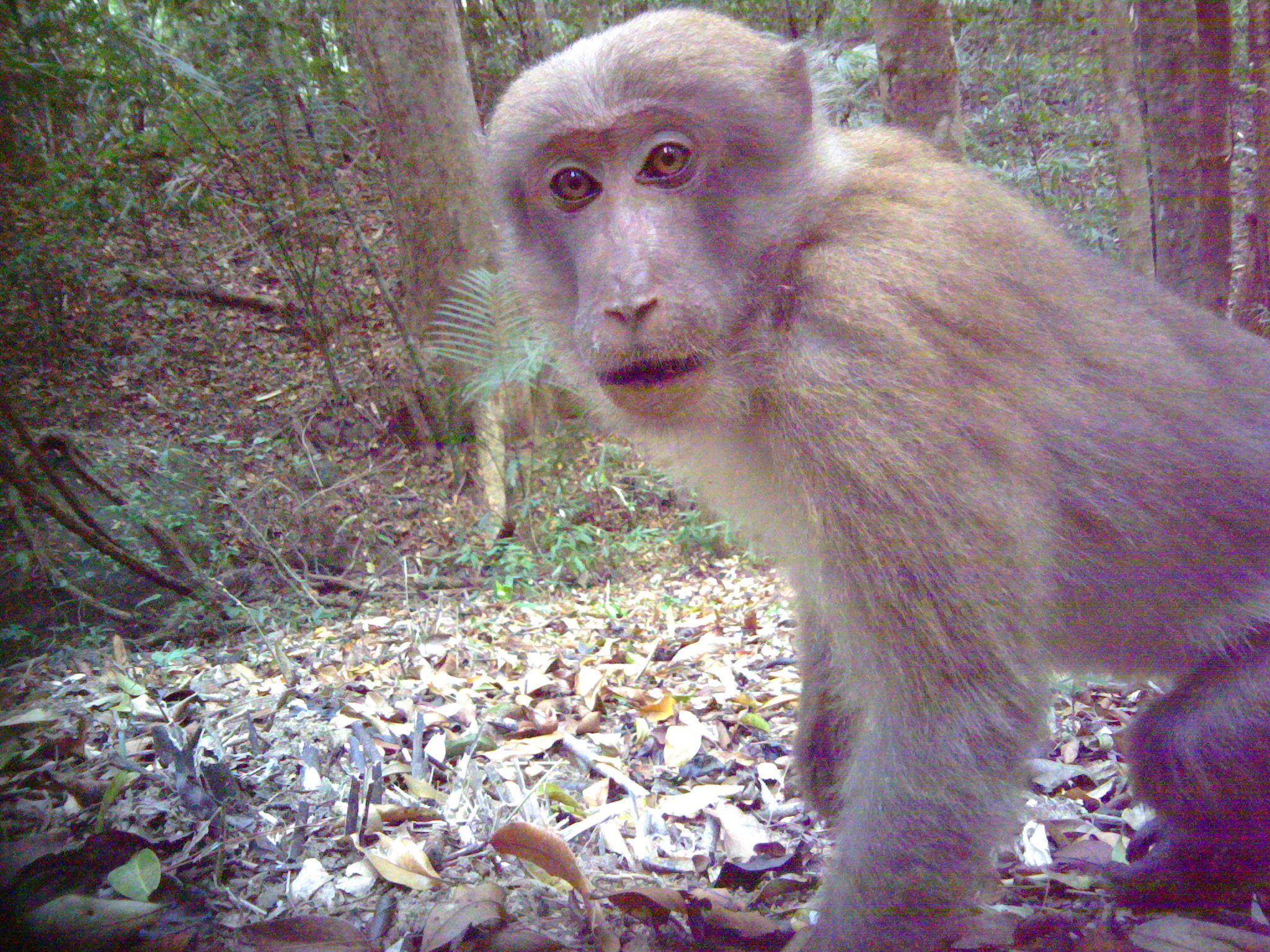
Assamese Macaque Macaca assamensis
Southeast Asia has long been identified as being the region of the world with the highest biodiversity extinction risk principally from unsustainable harvesting of forest resources (Duckworth et al., 2012; Sodhi et al., 2010; Hughes 2017) and this pattern is observed throughout Laos (Nooren & Claridge, 2001) and in Nakai – Nam Theun (e.g. Robichaud et al., 2009). The wildlife in the national park is severely threatened by illegal hunting, for local consumption and particularly for the international trade. Some species have already significantly declined including cats, small carnivores, ungulates; while others have been extirpated such as Tiger and Javan Rhinoceros (Robichaud et al., 2009; Coudrat et al., 2014a; Coudrat et al., 2014b; Gray et al., 2017) and it is expected that without control over unsustainable harvesting, the most hunting-sensitive and most sought-for species could face local extinction in the near future (e.g. Saola; Large-antlered Muntjac, Sambar, Greater Hog Badger, Binturong, Owston’s Civet, some primates, medium-sized cats, otters, wild cattle, pangolins, turtles). These camera-trap surveys in NNT NP are focussing on ground species only, which are the most directly affected by the intensive snaring happening in the region.
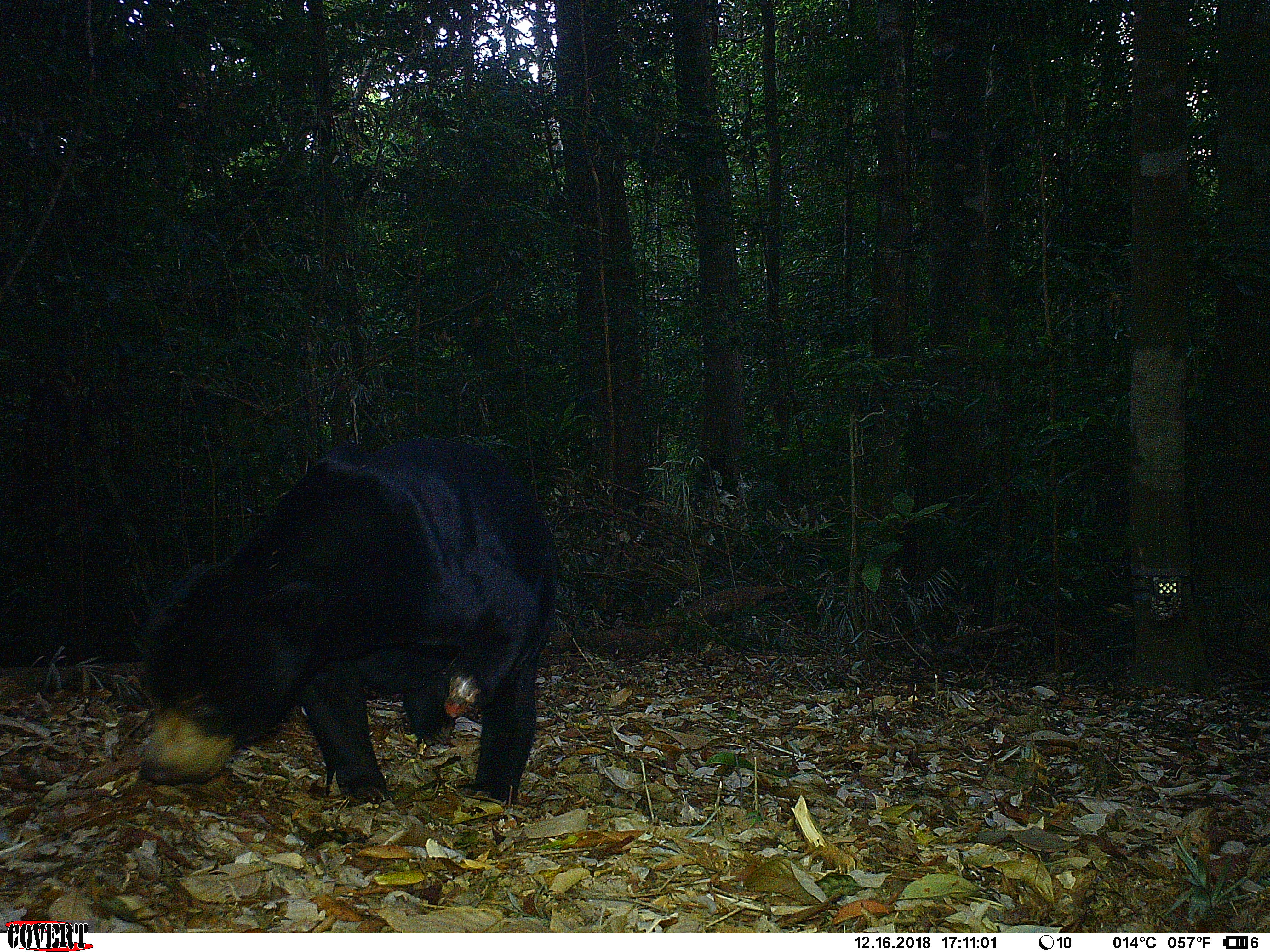
One photograph showed a Sun Bear with a missing paw; this is likely to be a snare-induced wound
The 2018-2019 camera-trap surveys resulted in a total of 33 species recorded identified to species, of which 14 are classified as Globally Threatened (Critically Endangered; Endangered; or Vulnerable), three as Globally Near Threatened and one as Globally Data Deficient by the IUCN Red List of Threatened Species (note that Ferret badger(s), weasel(s), partridge(s), bamboo rat(s) and pangolin(s) were not identified to species).
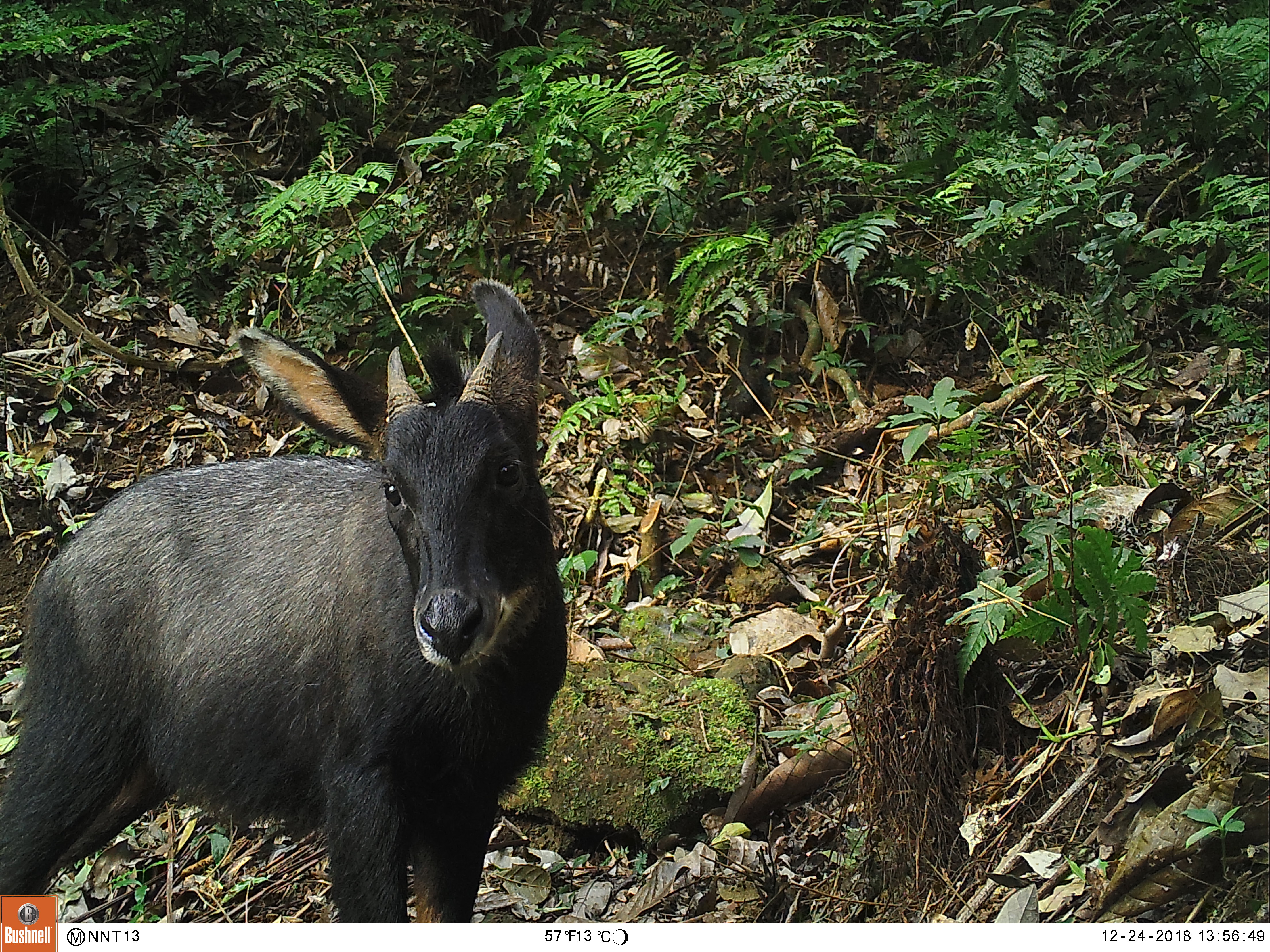
Chinese Serow Capricornis milneedwardsii
These surveys recorded several hunting-sensitive species, such as Hog Badger, Large-Indian Civet, Bears, Pangolins, Muntjacs (including the Critically Endangered Large-antlered Muntjac), Sambar. The fact that these species are still recorded in NNT NP is encouraging and means their population might be able to recover if law enforcement effort are adequate. Other species not recorded during our surveys that had been recorded in the past (e.g. Clouded Leopard, Asian Golden Cat, Coral-billed Ground Cuckoo; Crested Argus; Saola) may indicate their extirpation from NNT NP or their very low density.
Due to the large scale wildlife trafficking in the region, our final report is not shared publicly.
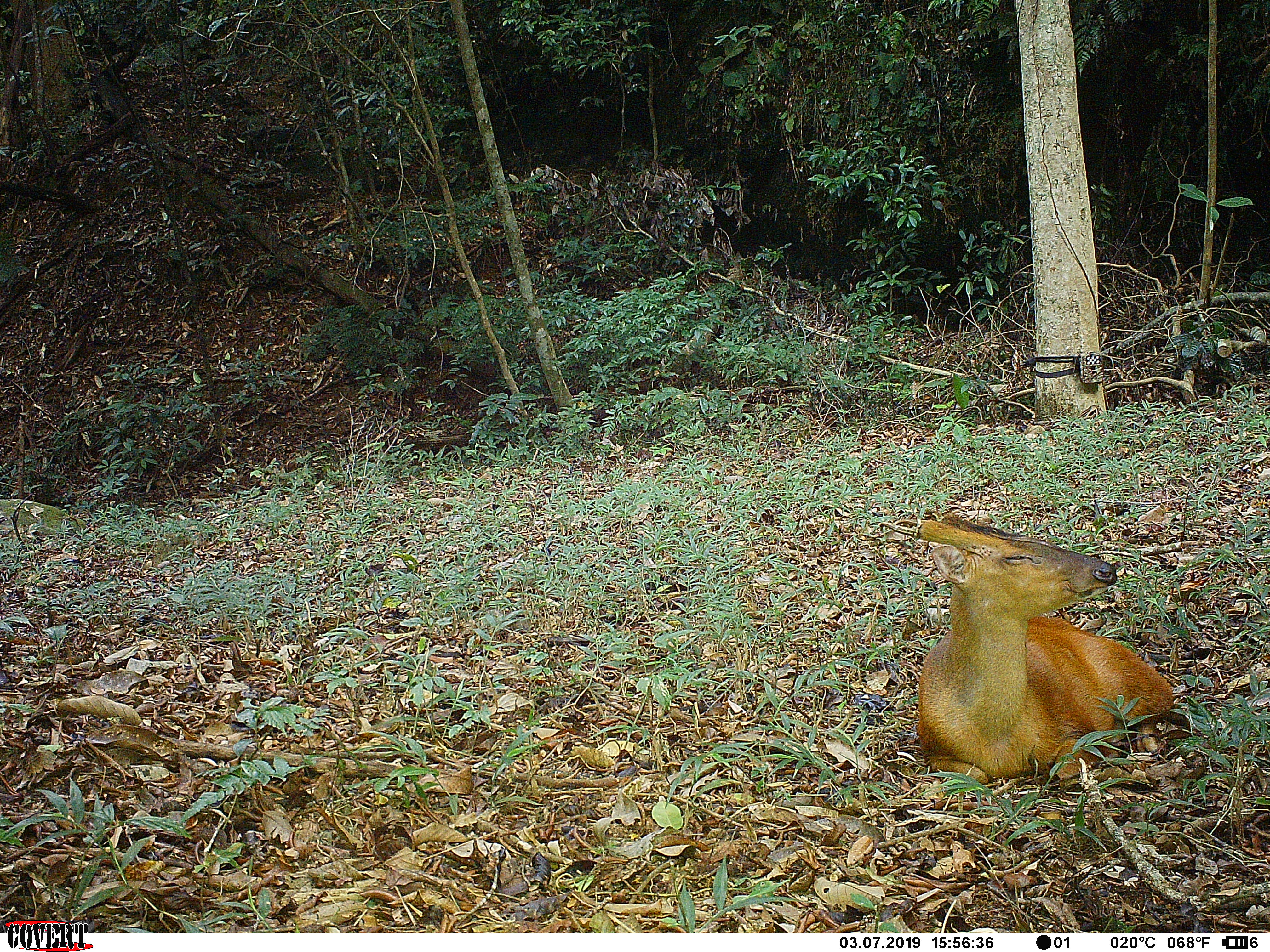
Northern Red Muntjac Muntiacus vaginalis
This project is conducted in collaboration with the Department of Ecological Dynamics at the Leibniz Institute for Zoo and Wildlife research, Berlin, Germany who have developed camera-trap protocols (Abrams et al., 2018), which we applied here for NNT NP. In August 2019, Camille Coudrat spent two weeks at the Leibniz Institute for Zoo and Wildlife research headquarters in Berlin, Germany, to work with their team on further aspects of the data that will lead to collaborative publications.
This project was funded by the National Geographic grant number WW-040C-17, the Mohamed Ben Zayed Species Conservation Fund grant number 172516260, Beauval Nature and the Nam Theun 2 Watershed Management and Protection Authority (WMPA). Permissions to conduct these surveys were granted by the WMPA and its board of directors including members from the Ministry of Agriculture and Forestry of the Lao P.D.R.

female with young Sambar Rusa unicolor
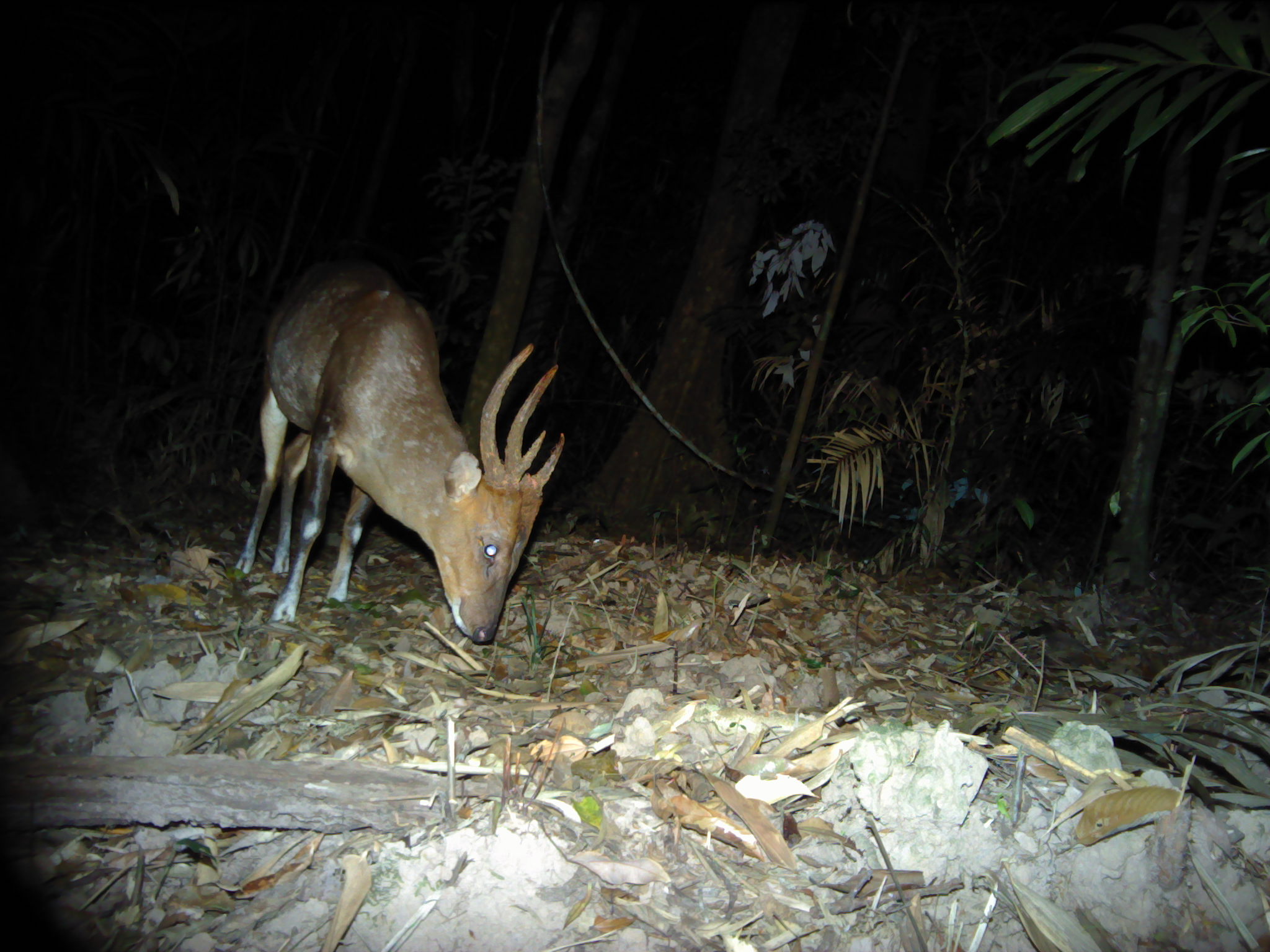
male Large-antlered Muntjac Muntiacus vuquangensis
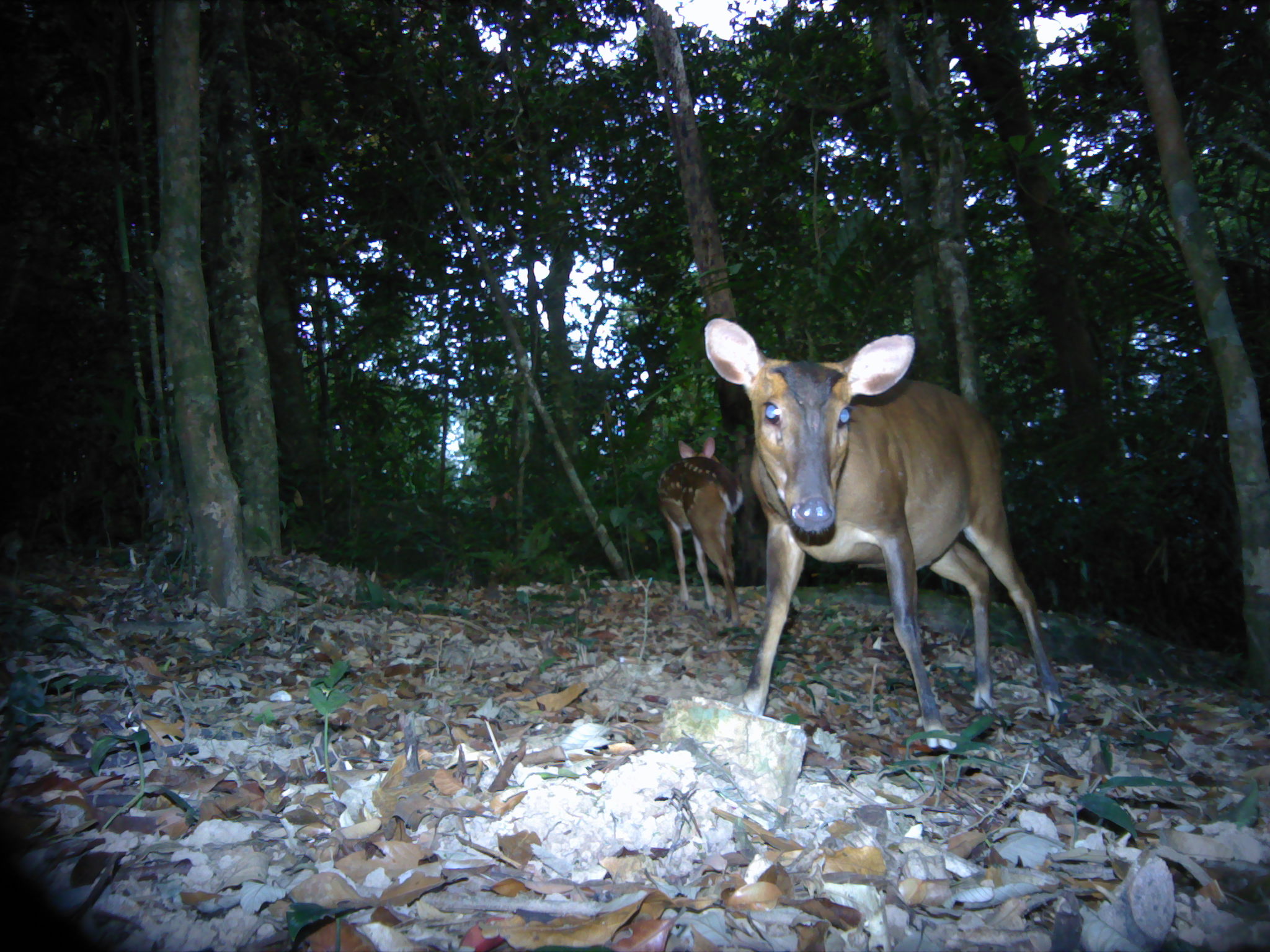
female with young Large-antlered Muntjac Muntiacus vuquangensis
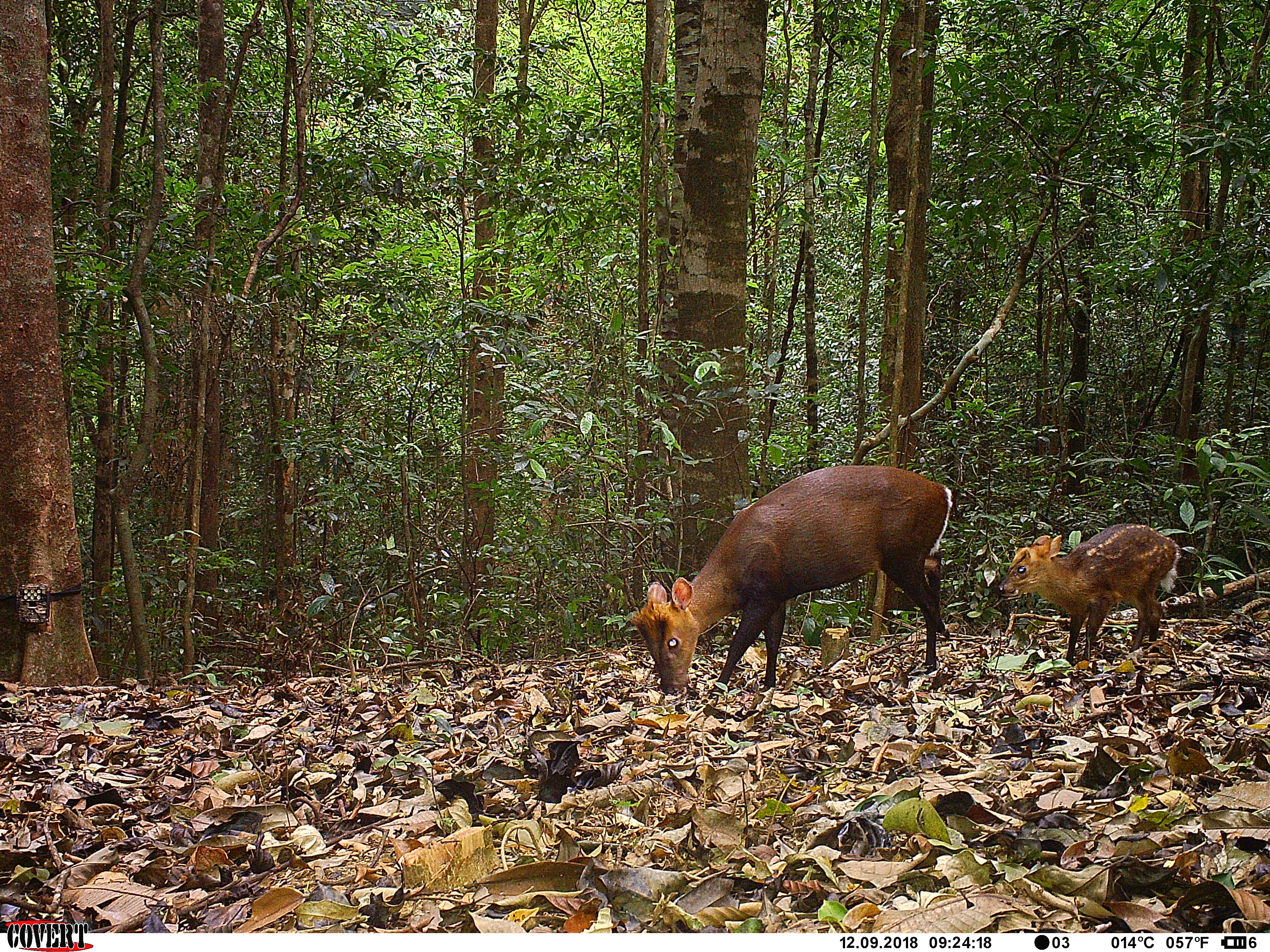
female with young Roosevelts’-group Muntjac Muntiacus cf. rooseveltorum
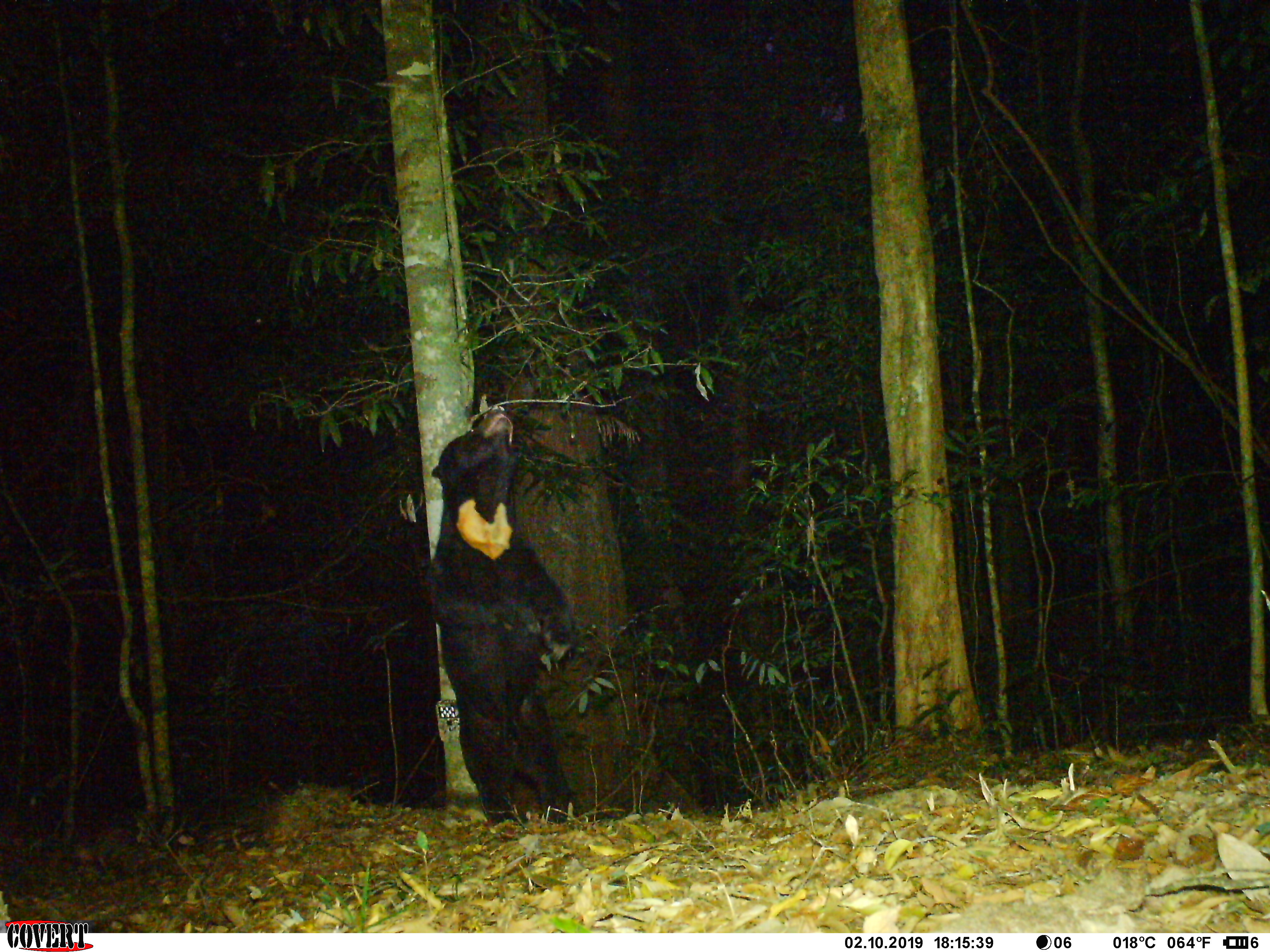
Sun Bear Helarctos malayanus
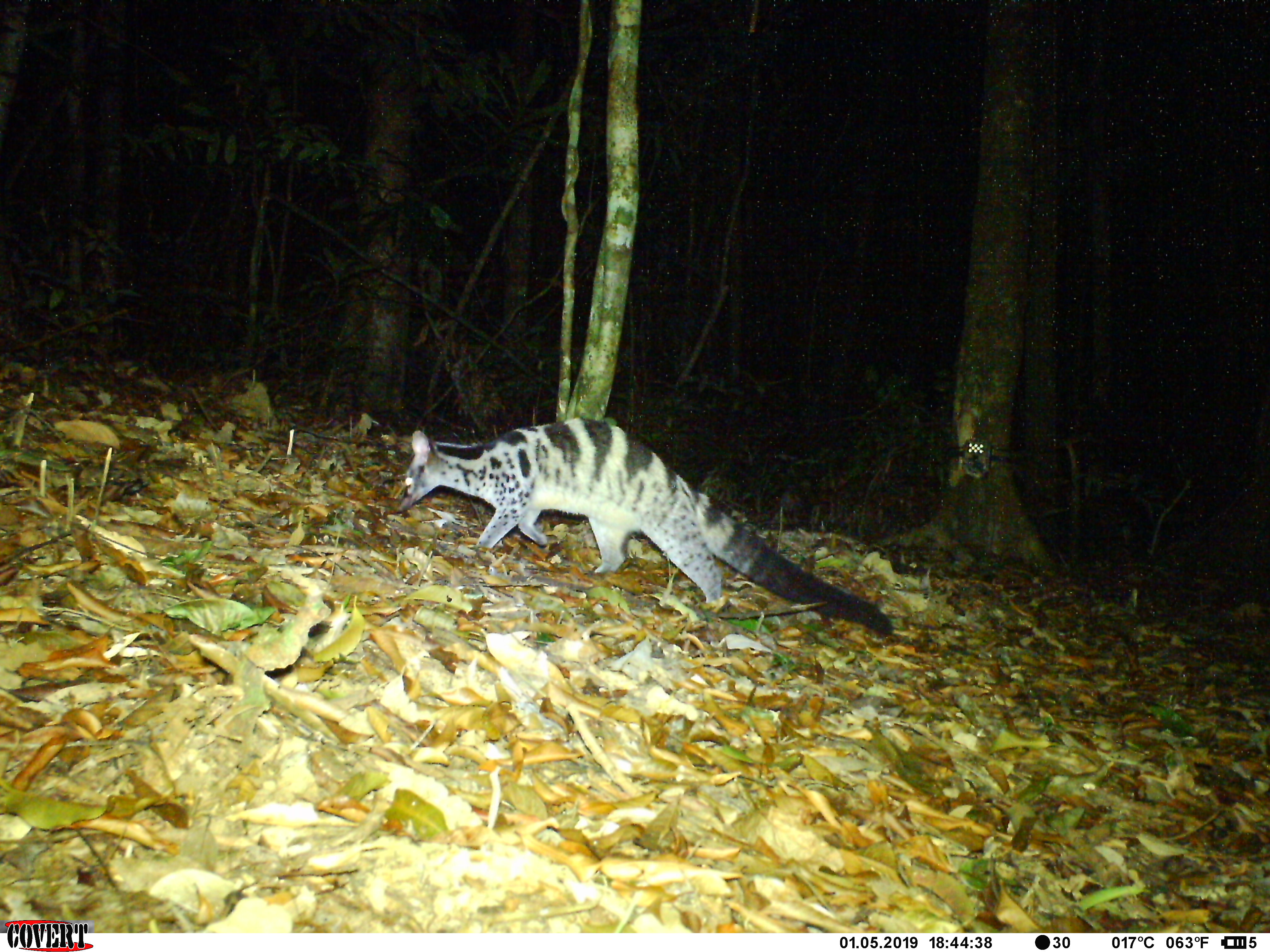
Owston’s Civet Chrotogale owstoni
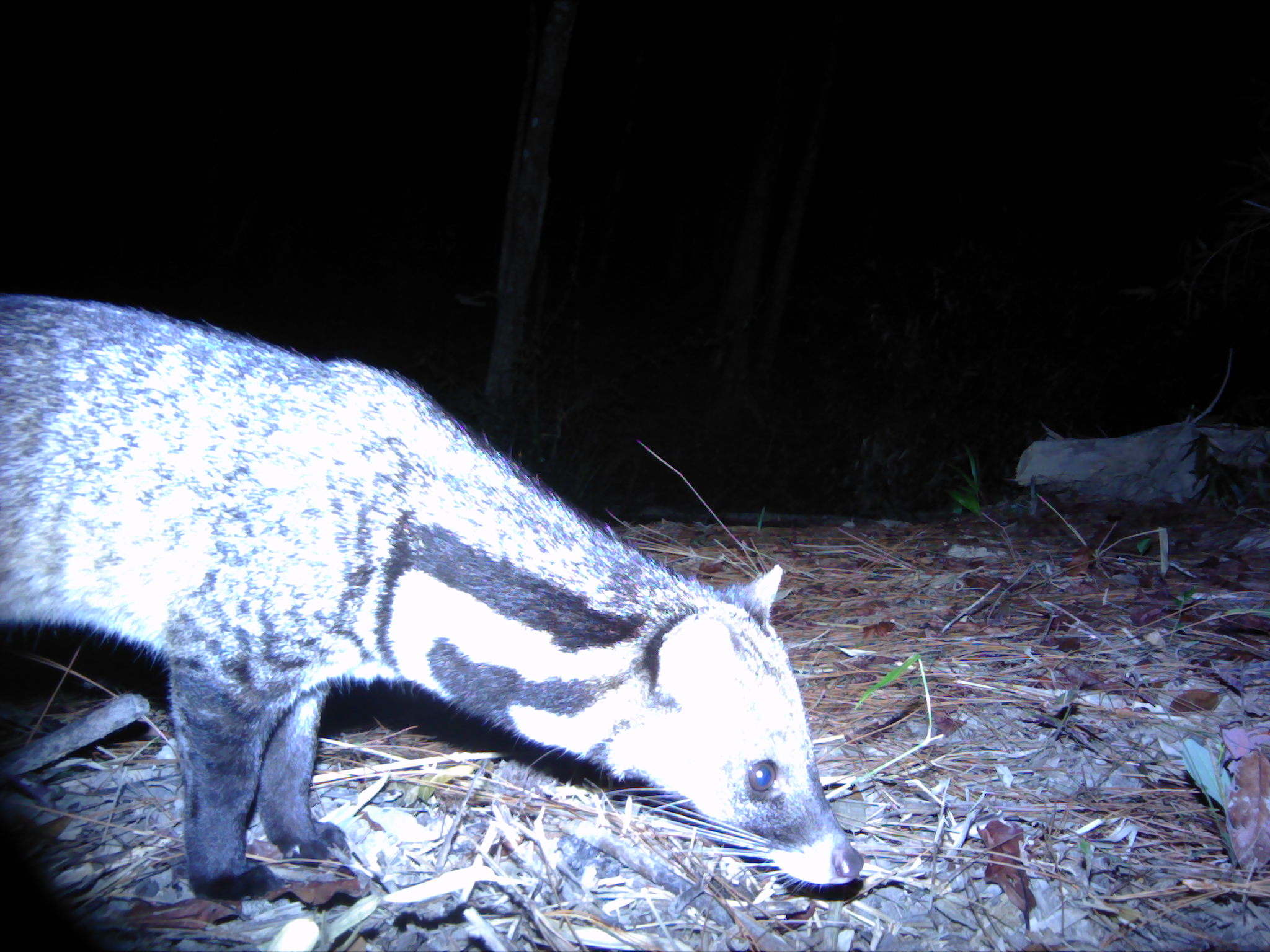
Large Indian Civet Viverra zibetha
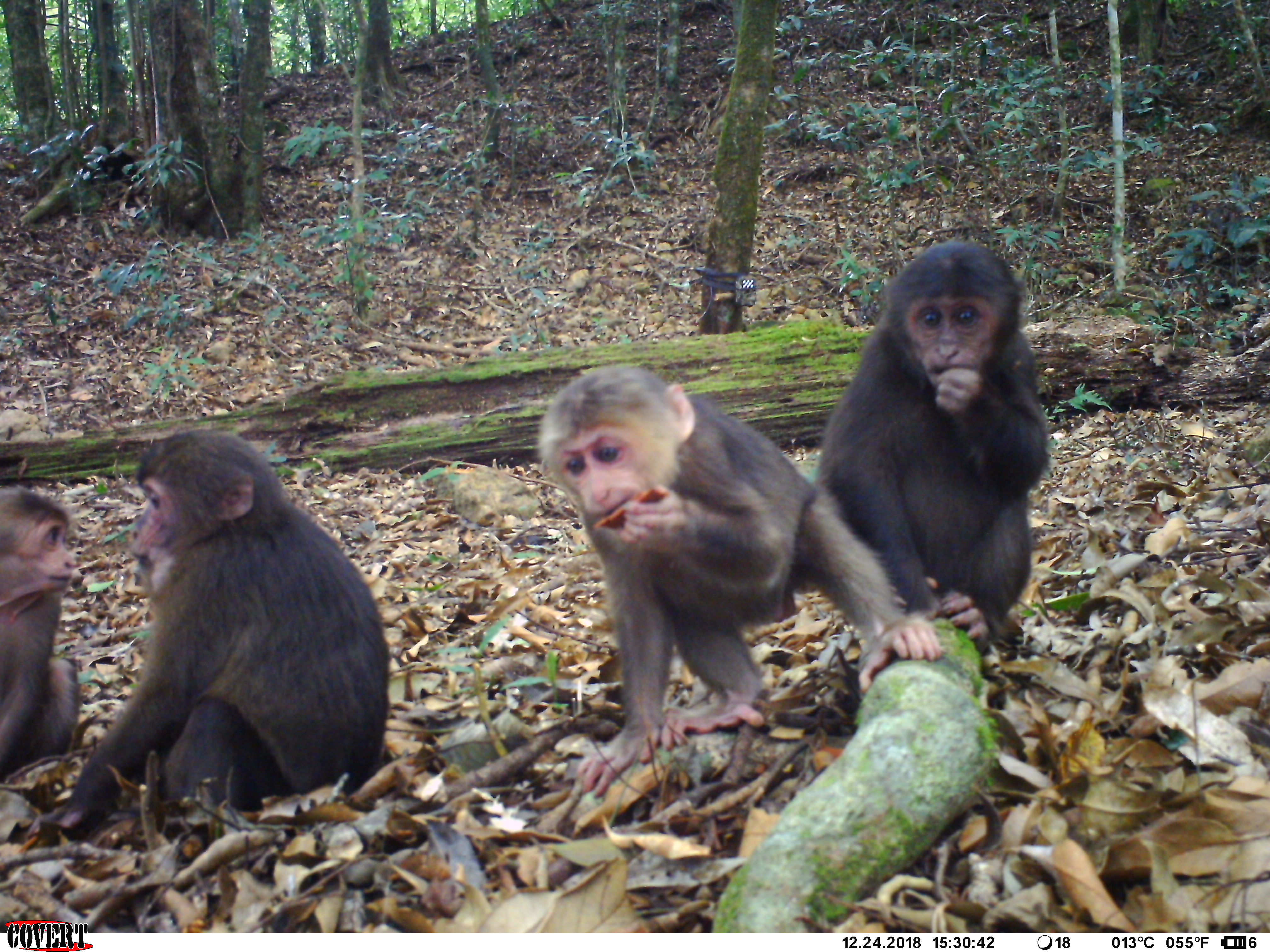
young Stump-tailed Macaques Macaca arctoides
References cited
Abrams, J.F., Axtner, J., Bhagwat, T., Mohamed, A., Nguyen, A., Niedballa. J., Sollmann, R., Tilker, A.R., Wilting, A. 2018. Studying terrestrial mammals in tropical rainforests. A user guide for camera-trapping and environmental DNA. Leibniz-IZW, Berlin, Germany.
Coudrat, C.N.Z. & Nekaris, K.A.I. 2013. Modelling Niche Differentiation of Co-Existing, Elusive and Morphologically Similar Species: A Case Study of Four Macaque Species in Nakai – Nam Theun National Protected Area, Laos. Animals 3(1): 45–62.
Coudrat, C.N.Z. Nanthavong, C., Sayavong, S., Johnson, A., Johnston, J., Robichaud, W.G. 2014a. Non-Panthera cats in Nakai – Nam Theun National Protected Area, Lao PDR. Cat News – Special Issue 8: 45–52.
Coudrat, C.N.Z., Nanthavong, C., Nekaris, K.A.I. 2013. Conservation of the red-shanked douc Pygathrix nemaeus in Lao People’s Democratic Republic: density estimates based on distance sampling and habitat suitability modelling. Oryx, 48(4): 540–547.
Coudrat, C.N.Z., Nanthavong, C., Sayavong, S., Johnson, A., Johnston, J.B., Robichaud, W.G. 2014b. Conservation importance of Nakai – Nam Theun National Protected Area, Laos, for small carnivores based on camera trap data. Raffles Bulletin of Zoology 62: 31–49.
Duckworth, J.W., Batters, G., Belant, J.L., Bennett, E.L., Brunner, J., Burton, J., Challender, D.W.S., Cowling, V., Duplaix, N., Harris, J.D., Hedges, S., Long, B., Mahood, S.P., McGowan, P.J.K., McShea, W.J., Oliver, W.L.R., Perkin, S., Rawson, B.M., Shepherd, C. R., Stuart, S.N., Talukdar, B.K., Dijk, P.P. van, Vié, J-C., Walston, J.L., Whitten, T., Wirth, R. 2012. Why South-east Asia should be the world’s priority for averting imminent species extinctions, and a call to join a developing cross-institutional programme to tackle this urgent issue. SAPIENS 5: 76–95.
Gray, T.N.E., Hughes, A.C., Laurance, W.F., Long, B., Lynam, A.J., O’Kelly, H., Ripple, W.J., Seng, T., Scotson, L., Wilkinson, N.M. 2017. The wildlife snaring crisis: an insidious and pervasive threat to biodiversity in Southeast. Biodiversity and Conservation.
Hughes, A.C. 2017. Understanding the drivers of Southeast Asian biodiversity loss. Ecosphere 8(1): 1–33.
Nooren, H., Claridge, G. 2001. Wildlife trade in Laos: the End of the Game. TRAFFIC Southeast Asia, The Netherlands Committee for the IUCN, Amsterdam, NL.
Robichaud, W.G., Sinclair, A.R.E., Odarkor-Lanquaye, N., Klinkenberg, B. 2009. Stable forest cover under increasing populations of swidden cultivators in central Laos: the roles of intrinsic culture and extrinsic wildlife trade. Ecology and Society 14: 33–60.
Sodhi, N.S., Posa, M.R.C., Lee, T.M., Bickford, D., Koh, L.P., Brook, B.W. 2010. The state and conservation of Southeast Asian biodiversity. Biodiversity and Conservation 19: 317–328.
